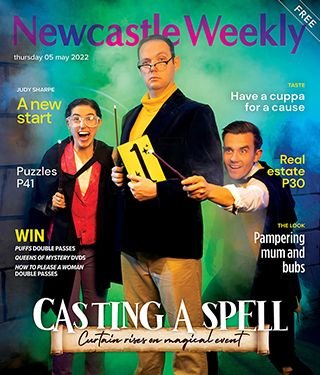Media Matters: Rod Thompson, Newcastle Weekly editor
Rod Thompson is a highly experienced and award winning print journalist. He has worked as a journalist and editor for a variety of publications across regional NSW. From sport to politics, entertainment, crime and community news, Rod has covered it all. He is currently the editor of the Newcastle Weekly.
Peak Presenting director Craig Eardley caught up with Rod who kindly shared his tips to help you work effectively with the media.
Where has your media career taken you?
I started my career at the Port Macquarie News, a tri-weekly publication, completing my cadetship within two years of leaving school. Under the guidance of experienced mentors Laurie Barber and Don Barnier, I soon found myself covering many rounds – from community to service clubs, entertainment to news, and police to court.
During that time, I received a number of awards, including the prestigious Rural Press Feature Story of the Year, and numerous commendations. I was also part of the team, which took out the E.C Sommerlad Memorial Award for distinguished editorial leadership in regional NSW. From there, I moved into sport and spent many years honing my craft in rugby league, union, football, AFL, horse racing, netball, tennis and much more. I assumed the sports editor’s position at the Port Macquarie News for a decade, before moving into the production editor’s role and, subsequently, deputy editor.
In 2011, I was offered the editor’s gig at the Muswellbrook Chronicle and Hunter Valley News, relocating for the first time. That eventually merged into the Upper Hunter editor’s responsibility with the addition of the Scone Advocate and Singleton Argus. The advent of COVID-19 changed the media landscape in rural areas, so I joined the Newcastle Weekly in 2020. That ultimately led me into the editor’s chair again.
Your favourite or most memorable story?
Wow! My favourite story… that’s a tough one to decide over so many years in the industry. There have been countless community-based or sporting achievement yarns, which I’ve loved sharing. But, I guess the story, which saw me win the Feature Story of the Year award is something I won’t forget. There had been a lot of trouble, including assaults on women, at a place in Port Macquarie called the Town Green, particularly at night. I went “undercover” for a couple of evenings, mingling with the teenagers down there to find the cause of the problems. Basically, it came down to “boredom” – the teens virtually had nothing to do as it was a small country town at that time. So, they’d start drinking from an early age, which would then manifest into all sorts of bigger issues. The Port Macquarie News ran a series of articles highlighting not only the dilemmas, but expert advice on how to remedy the situation.
What makes a good news story?
Anything can be a good news story because everyone has something unique to share. However, an “interesting” topic or subject is a key component. You can write a yarn about Freddy Smith playing his favourite sport, but you need to find that element, which will attract readers. Is he a local junior? Why did he choose it? Is he following in a family member’s footsteps, for example? Readers need to connect with the person, or theme, to embrace it.
The one thing people should avoid when working with media?
The main thing people should avoid when working with the media is “don’t make it too difficult”. Life’s not meant to be hard. And, with the time constraints on everyone these days, keeping it simple is best.
Your top tip for people to gain media coverage?
To gain media coverage (particularly online or in print), always make sure you have the “who”, “what”, “where”, “when”, “why” and “how” included in your release. Find an interesting angle, too. Also, try not to write more than 500 words as the reader usually loses interest after 350. And, don’t be repetitive with the words you use… there are so many in the English language, vary it a bit.
What about pitching and sending stories to media?
The best tip I can offer is look at the website of the media organisation that you’re dealing with and take in how they put things together. A lot of outlets will not use a release “verbatim”, unless it’s perfect, so expect to see changes. Always include a number of good high-res images, as well as a reliable contact number. If you only send one photo with a release, the chances are other media won’t use it. Variety is the spice of life.
How do you relax outside of work?
Outside of work, I love my movies (going to the cinema with my beautiful daughter), music and sport. Since COVID-19, I’ve taken up walking to maintain my health. But, there’s nothing better than sitting in the theatre with a popcorn and watching a film on the big screen, forgetting about the rest of the world.
Rod is always happy to hear your stories. Email editorial@newcastleweekly.com.au or submit a news tip here. Follow the Newcastle Weekly on Facebook, Instagram or Twitter.


